A ‘history-changing’ discovery: A 3,000-year-old ship carrying wine jugs found 90 kilometers off the Israeli coast by underwater robots shows that ancient seafarers had more courage than previously thought
An ancient ship containing hundreds of beautifully preserved wine jugs has been found at the bottom of the Mediterranean Sea.
The 12-meter-long ship, found 1.6 km deep on the seabed 90 km off the coast of Israel, dates back 3,300 years to the Late Bronze Age, experts say.
It is believed to be the oldest ship found this deep in the Mediterranean, as previous shipwrecks from this era have never ventured this far from land.
This suggests that ancient navigators were better able to navigate the deep seas than historians previously thought.
The ship was probably sunk by a storm or after being attacked by pirates, the discoverers believe.
The 12-meter-long ship, found 1.6 km deep on the seabed 90 km off the coast of Israel, dates back 3,300 years to the Late Bronze Age, experts say. Here, researchers check jugs discovered in the wreck – more than a mile deep in the bottom of the Mediterranean Sea
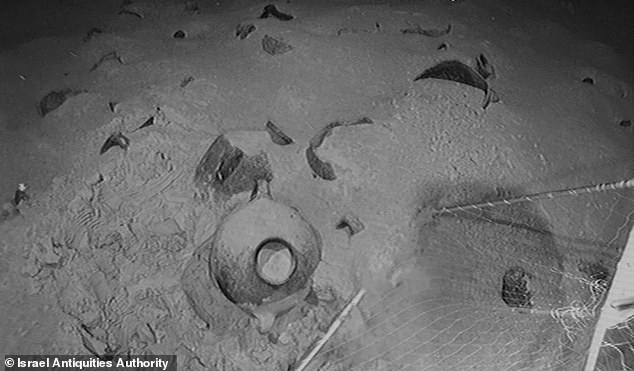
The ship’s cargo consisted of hundreds of intact amphorae – the ancient ship shape used as a storage jar for wine, oil and fruit
Jacob Sharvit, head of the Israel Antiquities Authority’s marine unit, called it “a history-changing, world-class discovery.”
“It appears that the ship sank in a crisis, either due to a storm or due to attempted piracy – a well-known event in the Late Bronze Age,” he said.
Although the exact location has not been revealed, experts say the shipwreck is on the seabed, about 90 km from Israeli land.
The ship itself will remain submerged at least for the time being, but maritime technicians have managed to remove the jugs “with minimal risk of damage to the entire structure.”
The jugs are amphora – a storage vessel typical of the ancient world, with a large oval body, a narrow cylindrical neck and two handles, used for carrying oil, wine and fruit.
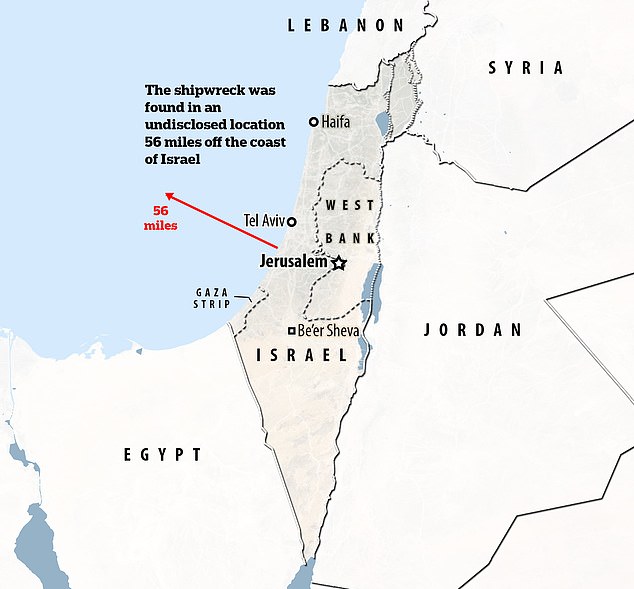
Although the exact location has not been revealed, experts say the shipwreck is on the seabed, about 90 km from Israeli land.
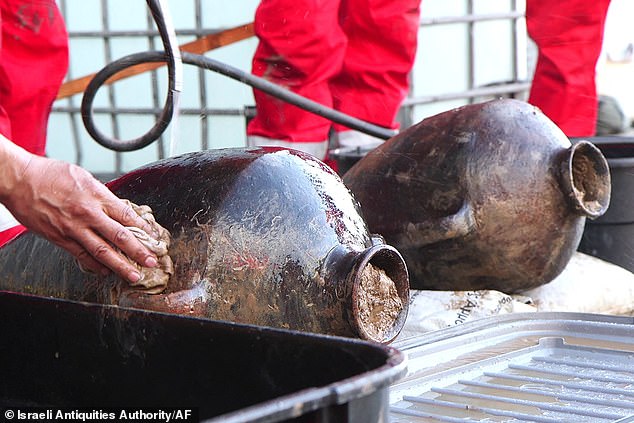
researchers check artefacts discovered in a wreckage more than a mile deep in the bed of the Mediterranean Sea by London-listed energy company Energean

The contents were identified by the Israel Antiquities Authority as storage vessels from the Late Bronze Age

The late Bronze Age ship itself remains submerged at least for the time being, although its contents have been brought ashore
“The muddy bottom hides a second layer of ships, and it appears the ship’s wooden beams are also buried in the mud,” Sharvit said.
The fact that the ship was so far out to sea suggests that the navigation skills of ancient navigators were more advanced than previously thought.
They would have been able to cross the Mediterranean without a ‘line of sight’ to any coast, rather than being forced to stay close to land where they could more easily return home.
“From this geographic point, only the horizon around is visible,” Sharvit said.
‘To navigate they probably used the celestial bodies, taking observations and angles of the sun and star positions.’
Two similar ships from the same era had previously been discovered in the Mediterranean, but only close to shore.
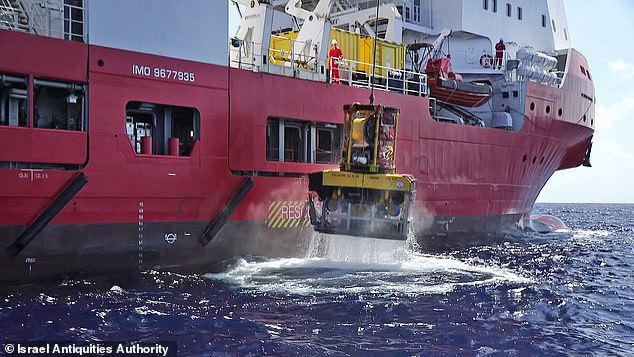
The ship itself remains submerged for the time being, but naval technicians have managed to extract the jugs ‘with minimal risk of damage to the entire structure’
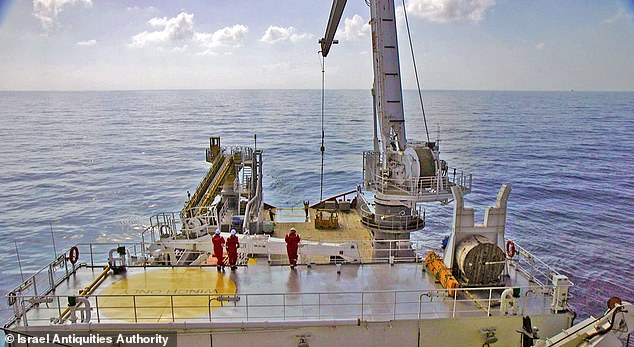
This is both the first and the oldest ship found in the deep sea of the eastern Mediterranean, ninety kilometers from the nearest coast
The ‘groundbreaking discovery’ was unexpectedly made last year by Energean, a London-based natural gas company, during routine scans of the seabed using robots – but only now are experts detailing the findings.
“As part of our ongoing activity to discover and extract natural gas from the deep sea, we are conducting surveys that monitor various parameters using an advanced underwater robot to search the seabed,” said Dr. Karnit Bahartan of Energean.
‘About a year ago while conducting a survey we noticed the unusual sight of what appeared to be a large pile of jugs piled up on the seabed.
“We are in constant contact with the Israel Antiquities Authority, and when we sent them the images, it turned out to be a sensational discovery, far beyond what we could have imagined.”
